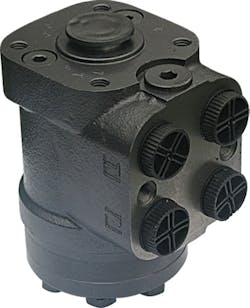Go-fast boats typically can rip through calm seas at 80 knots or more. Built with a deep V fiberglass hull, these racing boats usually run 30 to 50 ft long and have a narrow beam (width, for you landlubbers) for minimal drag. Oh, and they may be powered by twin engines of 500 hp — that’s each, not in total.
Keeping all this speed and power under control requires precise steering. This is where hydraulics comes in — and Young Powertech Inc., Garnet Valley, Pa. Young Powertech supplies hydraulic steering control units for high performance speed boats.
Tom Sheridan, of Young Powertech, explained, “A shock valve will protect the steering cylinders from pressure spikes caused by external forces (water dynamics in this case) on the steering system.” He also revealed that a suction valve is also referred to as a manually steering check valve.
The 101S Series comes in displacements from 3.0 to 24.41 in.3/revolution and rated flows from 1.32 gpm to 10.5 gpm. Maximum input pressure is 2320 psi and maximum backpressure is 362 psi.
For more information on hydraulic steering systems and components, call Young Powertech at (888) 465-3561, email Tom Sheridan at [email protected], or visit www.youngpowertech.com.



